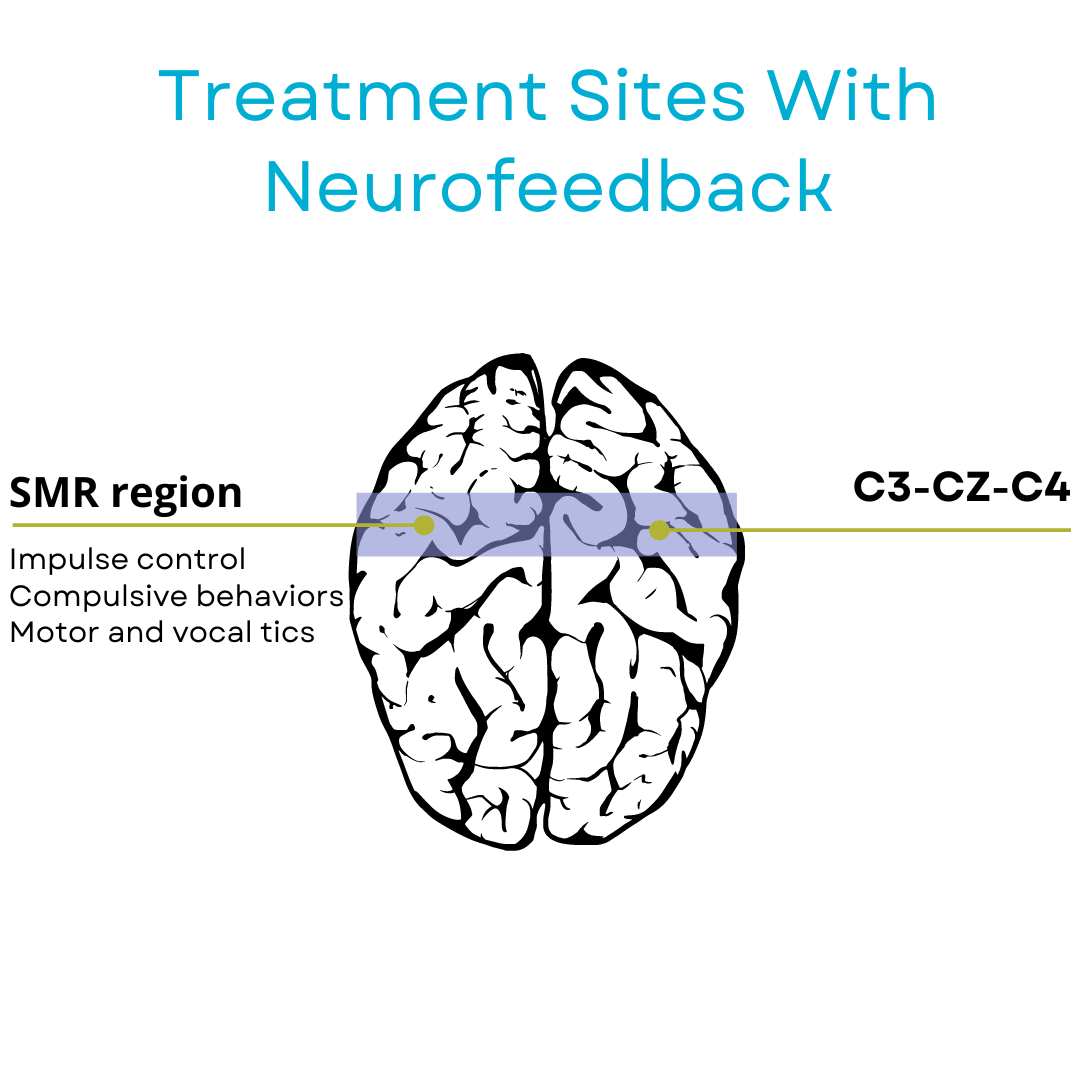Tourette Syndrome/ Tic Disorder
Tourette syndrome (TS) is a neurodevelopmental disorder characterized by repetitive, involuntary movements, and vocalizations known as tics. These tics can range from mild to severe and often manifest during childhood, with potential impacts on daily functioning and quality of life. Traditional treatments for Tourette’s include medications, behavioral therapies, and psychoeducation. However, neurofeedback has emerged as a promising alternative or complementary approach for managing Tourette syndrome.
Neurofeedback, also known as electroencephalographic (EEG) biofeedback, involves real-time monitoring and self-regulation of brain activity. In the context of Tourette’s, neurofeedback focuses on modifying specific neural patterns associated with the occurrence and severity of tics. Unlike medication, which may have side effects, neurofeedback is a non-invasive method that directly addresses the underlying neural mechanisms contributing to tics.

Research in the field has shown promising results, indicating that neurofeedback can contribute to a reduction in tic frequency and severity. By providing individuals with real-time feedback on their brain activity, neurofeedback helps them learn to self-regulate and modulate the neural patterns associated with tics. This training enhances control over motor and vocal responses, leading to improvements in tic management.
The motor strip is in the C3C4 region of the brain. The sensorimotor strip is responsible for conscious control of all voluntary muscles. Exercising this SMR region of the brain results in increased voluntary control over tics-both simple & complex. The threshold for motor discharge is increased via neurofeedback, hence creating more motor control.
Studies
Farkas A, Bluschke A, Roessner V, Beste C. Neurofeedback and its possible relevance for the treatment of Tourette syndrome. Neurosci Biobehav Rev. 2015 Apr;51:87-99. doi: 10.1016/j.neubiorev.2015.01.012. Epub 2015 Jan 20. PMID: 25616186. Neurofeedback is gaining recognition as a therapeutic intervention for various neuropsychiatric disorders, targeting cognitive control dysfunctions and disorder-specific symptoms. This review suggests that neurofeedback is a valuable therapeutic avenue for addressing executive control functions in Tourette syndrome (TS). Executive control deficits in TS, particularly when accompanied by attention-deficit/hyperactivity disorder (ADHD) symptoms, are linked to cortico-thalamic-striatal circuit dysregulation, which may also contribute to motor symptoms in TS. These deficits, common in comorbid TS/ADHD, involve neurophysiological processes modifiable through neurofeedback. Despite limited efforts to utilize neurofeedback for cognitive dysfunctions in TS, this review advocates for its consideration as a promising treatment option. The focus is on the adaptability of neurofeedback to target executive control deficits, alleviating, both cognitive and motor symptoms in TS. The review emphasizes the scarcity of current neurofeedback applications for cognitive dysfunctions and proposes the integration of neurofeedback into existing intervention strategies for comorbid TS/ADHD and associated cognitive control dysfunctions. Recognizing that cognitive control deficits are particularly pronounced in comorbid TS/ADHD cases, neurofeedback emerges as a potentially valuable tool in addressing this prevalent combination of disorders.
Messerotti Benvenuti S, Buodo G, Leone V, Palomba D. Neurofeedback training for tourette syndrome: an uncontrolled single case study. Appl Psychophysiol Biofeedback. 2011 Dec;36(4):281-8. doi: 10.1007/s10484-011-9169-7. PMID: 21915704. Electroencephalography studies on individuals with Tourette syndrome (TS) have identified diminished Sensorimotor Rhythm (SMR) and heightened fronto-central Theta activity, likely contributing to motor and cognitive challenges in TS. Some evidence indicates that neurofeedback (NFB) training focusing on increasing SMR amplitude may be effective in tic reduction. This uncontrolled single case study involves a 17-year-old male with TS undergoing a NFB protocol, initially combining SMR uptraining and Theta downtraining. After sixteen sessions, six additional sessions focused solely on SMR uptraining. Notably, a more significant increase in SMR occurred with isolated SMR uptraining, while both training approaches led to a decrease in Theta activity. The patient exhibited reduced tics, improved emotional symptoms, and enhanced cognitive performance following both training phases. These results suggest that the observed clinical effects, including tic reduction, may be associated with the decrease in Theta activity accompanying SMR uptraining. Further research is needed to explore the applicability of NFB protocols for TS patients, particularly beyond isolated SMR uptraining.